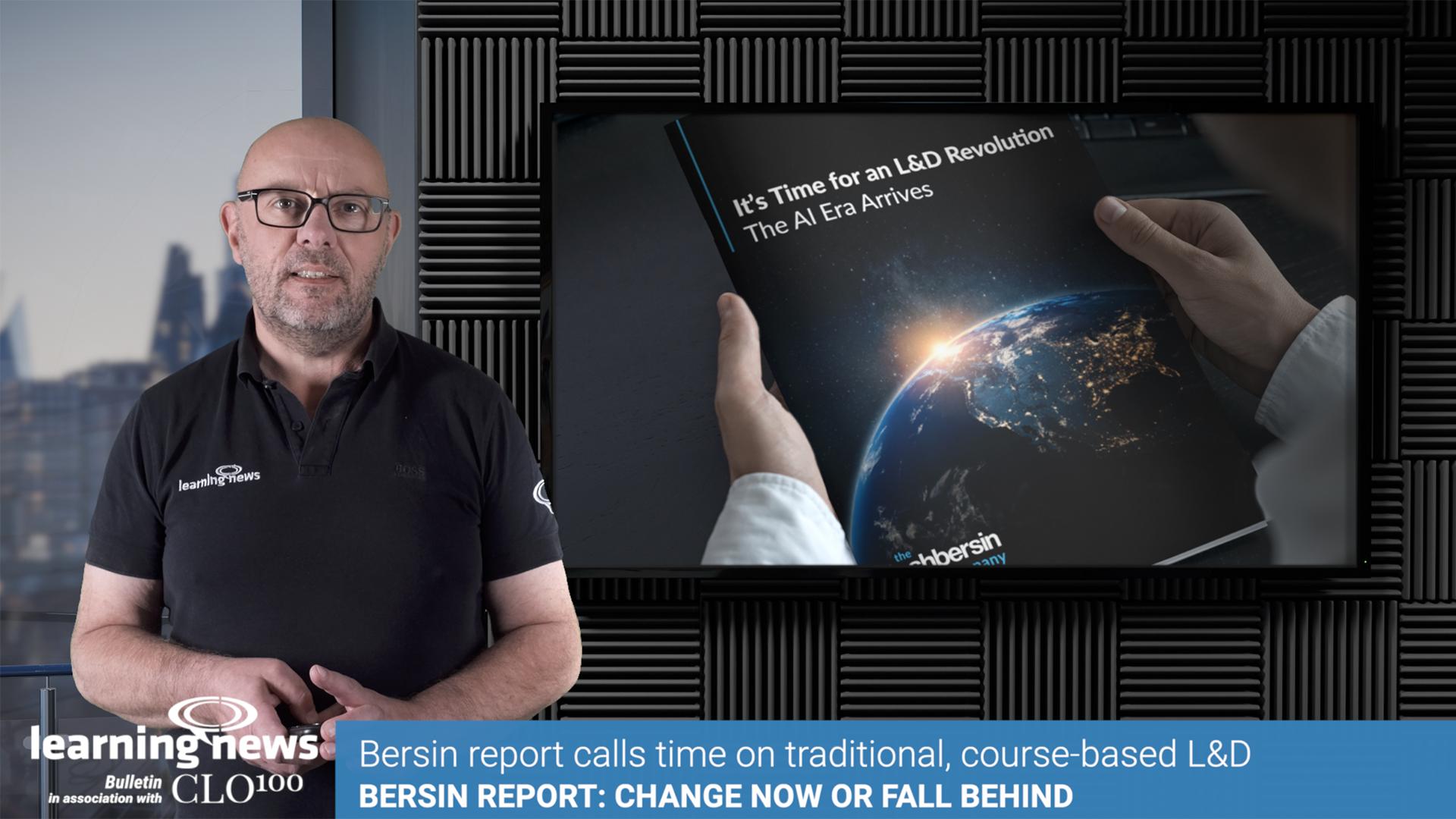Bersin calls for rethink of corporate learning in the AI era
A new report from the Josh Bersin Company urges L&D leaders to abandon outdated models and embrace a fundamental transformation, placing enablement not training at the heart of learning strategy.
Corporate learning needs more than an update, it needs a complete rethink.
That’s the core message of It’s Time for an L&D Revolution: The AI Era Arrives, the latest research report from the Josh Bersin Company. Drawing on data from hundreds of learning leaders and organisations, the report argues that the current corporate learning model, rooted in course catalogues, legacy platforms and linear instructional design, is no longer fit for purpose in an AI-enabled world.
‘The old ways of working will not survive the AI revolution,’ says Amy Farner, EVP of Product at the Josh Bersin Company. ‘If organisations are not willing to radically transform the ways they create content and the modalities of learning available, they risk becoming irrelevant.’
The report presents AI not as a new feature but as a structural shift; one that enables real-time, adaptive and decentralised learning embedded in the flow of work. It calls on L&D leaders to redefine their purpose, capabilities and operating models around this new reality.
Key stats and soundbites
- Global corporate learning spend now exceeds $400 billion a year
- Only 27% of companies say they are building the skills their business strategy requires
- Just 15% say their learning systems are well integrated with wider business tools
- Only 8% use AI to automate learning admin tasks like enrolment and reporting
- 90% oflearning is forgotten within a week if not reinforced (Ebbinghaus)
- Just 7% of L&D professionals consider themselvesexperts in AI tools
From training to enablement
A key theme in the report, urges a shift away from viewing L&D as a course publisher or content factory, towards becoming a strategic enablement function focused on performance, knowledge flow and skills development at scale.
‘Rather than being a content production function, L&D must become a business enablement engine,’ the report states. ‘It’s about solving business problems, not delivering content.’
This repositioning changes the makeup of L&D teams. Instructional designers are evolving into prompt engineers and learning architects. Teams are becoming leaner, more consultative and closer to the business.
AI as a force multiplier
Examples from companies including Moderna, Databricks and Superside show how AI is already being used to reduce development cycles, personalise learning and decentralise content creation.
Moderna, for example, has used AI to cut video production time and deliver personalised, embedded learning. Targeted automation saved thousands of hours across just one employee group.
‘AI is our force multiplier,’ said Moderna’s Head of Learning, Molly Nagler. ‘It helps us scale learning with precision and connect people to impact faster.’
Legacy systems holding L&D back
The report highlights the limitations of legacy platforms like the LMS, still the dominant system in most organisations. Originally built for compliance, these platforms struggle with personalisation, speed and integration.
The report notes: ‘The days of employees browsing portals to find courses are over. Agents and dynamic chatbots now deliver learning exactly how and where employees need it.’
The shift to AI-powered platforms, it argues, removes the need for much of the administrative and development overhead associated with legacy systems.
A new role for CLOs
The report calls for a new vision of the Chief Learning Officer: ‘The modern CLO is envisioned as a tech-enabled, AI-savvy leader aligned with business and IT.’
It argues that many CLOs have become embedded too deeply within HR structures and have lost their strategic influence. In the AI era, the CLO should be leading on skills strategy, enablement and organisational agility, in partnership with IT and business leaders.
Key findings:
- AI makes the old model obsolete: linear courses, fixed catalogues and static content cannot keep up with business change
- Learning must be decentralised: teams and individuals are empowered to create, curate and consume learning on demand
- Cost savings are significant: content development time and spend can be cut by up to half using AI
- Content is becoming conversational: chatbots, voice tools and embedded agents deliver content in the flow of work
- L&D skills are lagging: most teams are underprepared for the shift, with only a minority upskilling in AI, analytics and product thinking
The report concludes that the shift to AI-first learning is well underway and warns that organisations that delay risk being left behind.
‘AI may be the most important L&D innovation in a century,’ the report says. ‘This is not the time to incrementally improve. It’s time to let go of the past and rethink the entire learning model.’
For L&D leaders, the challenge is to reinvent not just the technology of learning but its role, purpose and impact across the business.
Notes
The report draws on the Josh Bersin Company’s Corporate Learning survey, interviews with hundreds of L&D leaders and further interviews with 40 chief learning officers, all gathered over the last two years.
Download the report: It’s Time for an L&D Revolution: The AI Era Arrives.


